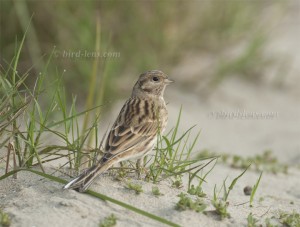 For middle Europe, Urs N. Glutz von Blotzheim listed 16 species of buntings of the genus Emberiza plus the Corn Bunting, Miliaria calandra, of the genus Miliaria, the Snow Bunting, Plectrophenax nivalis, of the genus Plectrophenax the Lapland Bunting (also known as Lapland Longspur), Calcarius lapponicus, of the genus Plectrophenax in his „Handbuch der Vögel Mitteleuropas“, Band 14/III „Emberizidae“. In total there are 19 species of buntings occurring in the west-center part of the Western Palearctic. The List of the birds of the whole Western Palearctic count for 25 species in this respect.
For middle Europe, Urs N. Glutz von Blotzheim listed 16 species of buntings of the genus Emberiza plus the Corn Bunting, Miliaria calandra, of the genus Miliaria, the Snow Bunting, Plectrophenax nivalis, of the genus Plectrophenax the Lapland Bunting (also known as Lapland Longspur), Calcarius lapponicus, of the genus Plectrophenax in his „Handbuch der Vögel Mitteleuropas“, Band 14/III „Emberizidae“. In total there are 19 species of buntings occurring in the west-center part of the Western Palearctic. The List of the birds of the whole Western Palearctic count for 25 species in this respect.
Of the rarer species of buntings some species occure as vagrants from the northern or eastern parts of Asia, as the Pine Bunting, Emberiza leucocephalos, the Yellow-browed Bunting, Emberiza chrysophrys, the Rustic Bunting, Emberiza rustica, Chestnut Bunting, Emberiza rutila, the Red-headed Bunting, Emberiza bruniceps, the Black-faced Bunting, Emberiza spodocephala and finally the Little Bunting, Emberiza pusilla. The plumage normally is quite drab due to their bush- and ground-dwelling lifestile a rare bunting is not easy to identify. This is particulary true for the females. Here you can find some images in the gallery of the rarer species of buntings.
Of the rarer species of buntings only the Little Bunting can be found with some regularity mainly in fall in western Europe. In Germany Little Buntings were observed at the Lisdorf Beringungsstation on the 13th of Oct 2011 and in Mecklenburg at the Greifswalder Oie on the 25th of Sept. 2011. On the Island of Helgoland, Little Buntings are twitched several times during the fall migration. On the other hand Helgoland was a temporary home for the Rustic Bunting, Emberiza rustica, only on Okt. 1995 and 1996 and for the Pine Bunting, Emberiza leucocephalos, only on Nov. 1995 and Okt. 1994.
Globally there are 45 species of buntings of the genus Emberiza. They are seed-eating birds with stubby, conical bills. “American sparrow” which are not sparrows of the family Passeridae but also buntings like the Lark Bunting, Calamospiza melanocorys are not included in that listing. The center of distribution for the “true” buntings is (eastern) Asia, Europe and Africa. More about this nice genus of birds, the buntings, you will find here. The article deals mainly with the taxonomic aspects of that genus and is very informative.
Hi, re rare buntings in the western palearctic, you may be interested to know that on 12th June 2019, I saw a rustic bunting on the southern corner of Grimnitzsee at Alhuttendorf, in the Schorfheide Chorin Biosphere Reserve. I thought this was well out of range but I got a couple of poor photos which were nevertheless good enough to confirm the identification.
Congratulation. This is really a mega bird for Germany